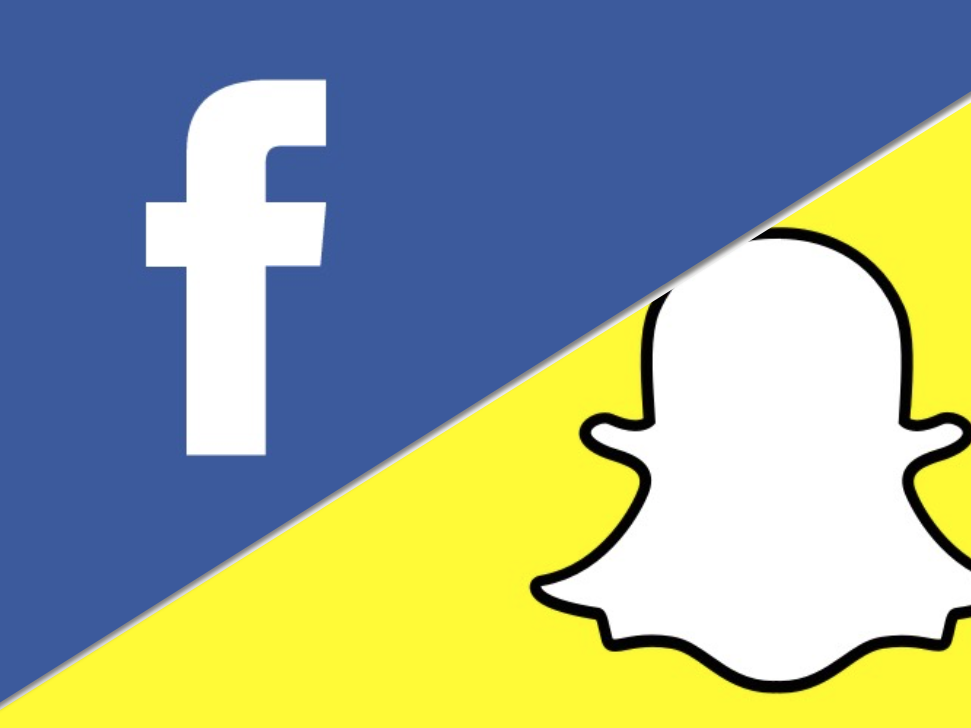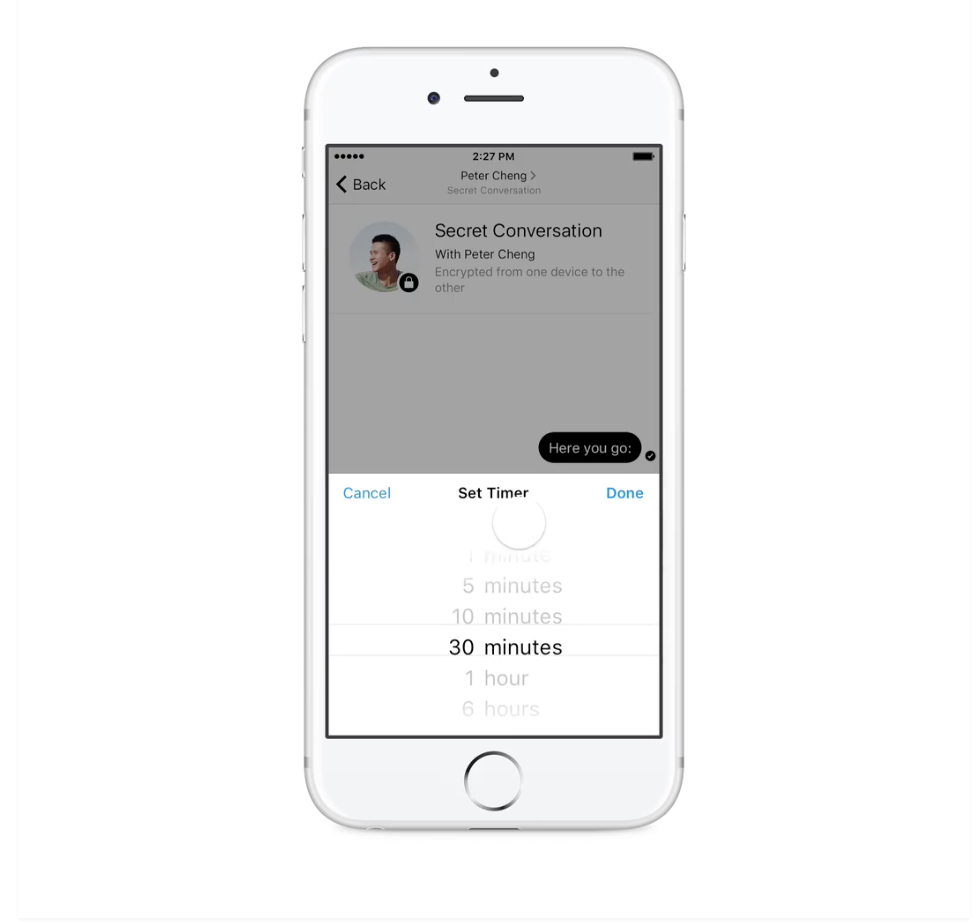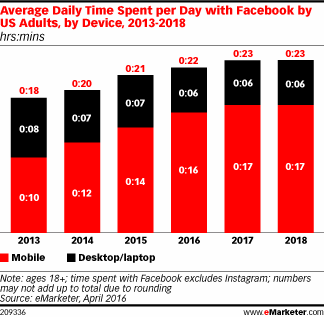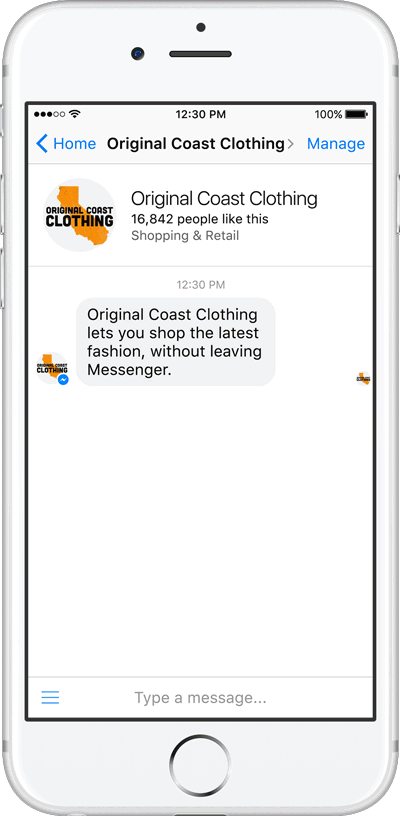It’s been a great year for Snapchat and it’s no surprise that Facebook is eyeing up many of its most successful features.
At the same time, Snapchat is moving away from ephemeral content and beginning to engage in a stronger battle against the most popular social network in the world than we first thought.
Will there be a clear winner?
Round 1: Audience
We may not have all the stats to compare side by side the audience for both platforms, but Facebook is certainly winning with its 1.65 billion monthly active users. There’s no social platform yet that can beat this number, while Snapchat only informs us for now that it counts over 100 million daily users.
Winner: Facebook
Round 2: Youth appeal
Snapchat got popular for its impressive appeal to the younger audience, starting as a fun and instant form of communication among teenagers. Although it has evolved since then, it is still attractive for the audience aged 13-24, as it forms 60% of its audience.
What’s more, Snapchat announced that it reaches 41% of all 18 to 34 year olds in the United States on any given day.
Facebook may be the most popular social network, but it seems to lose its appeal to the younger audience, and this is mostly attributed to the significant rise of the older generations.
There has been a 46% growth of new Facebook profiles from 2012 to 2015 for the ages of 45-54, while a decline of 25% has been noted at the same period for the new Facebook profiles of people aged 13-17 in US.
Teenagers and young adults start facing a new reality when more family members join Facebook, which means they gradually lose their interest and head to new platforms to freely express themselves.
This doesn’t mean that it’s easy to abandon the (Read more...) popular social network, but there’s a tendency of reduced shared content, especially among the younger audience, who prefers to use Instagram and Snapchat.
Winner: Snapchat
Round 3: Ephemerality
This is probably the most obvious win for Snapchat, as its main focus is on the power of ephemeral content and the urgency it creates to check the platform daily, in order to catch up with the latest content, before it disappears.
Snaps last for just 24 hours, which means that FOMO (fear of missing out) can become more intense, especially once you start adding more friends (and celebrities).
Facebook seems to be fascinated lately with the idea of ephemeral content and that’s why it announced the launch of secret conversations on Messenger, a feature that will introduce encrypted messages with a timer to control the when they will be visible to the recipient.
Winner: Snapchat
Round 4: Engagement
Snapchat has managed to create impressive engagement with ephemeral content, but it’s still not easy to beat Facebook, which has turned into a daily routine for a great number of its users.
According to eMarketer, US adults spend an average of 22 minutes a day on Facebook, while it is projected that they will be spending 23 minutes a day by 2018. Engagement may be high and it’s certainly attributed to the mobile domination, but its growth may not be enough in the coming years.
Snapchat has observed that 54% of its its users engage with the app daily, while the average iOS user in US spends an average of 18 minutes on Snapchat during the day, which means that there is an indication that the battle of engagement will become even more competitive soon.
Winner: Facebook
Round 5: Authenticity
You don’t have to like (or even understand) Snapchat to admit that it brought a new type of content to social media, with its explosive growth being attributed to the combination of ephemerality, creativity, simplicity and visual content.
The idea of vertical video has proven to be successful (and effective for brands), while filters turned out to be a fresh use of branded promotion.
It wouldn’t be fair to omit Facebook’s own authenticity back when it started, but as it’s heading to a more mature status, we’ll give this round to Snapchat and its attempt to beat the odds of success at a surprisingly fast rate.
Winner: Snapchat
Round 6: Fun
I may sound like a millennial (sorry Christopher), but I personally don’t find Facebook fun anymore. It may be informative, it may be creative from time to time, it’s certainly addictive, but it’s not as fun as it used to be.
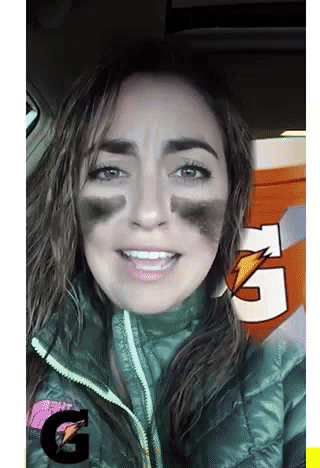 On the other hand, Snapchat is trying hard to be taken seriously, as it is still known as the platform that may turn you into a dog, or swap your face with Leonardo DiCaprio. Lenses have turned out to be very popular for Snapchat and their constant update creates a habit of trying out the new ones, again, for the sake of (useless) fun.
On the other hand, Snapchat is trying hard to be taken seriously, as it is still known as the platform that may turn you into a dog, or swap your face with Leonardo DiCaprio. Lenses have turned out to be very popular for Snapchat and their constant update creates a habit of trying out the new ones, again, for the sake of (useless) fun.
However, this changed when brands joined the game of sponsored lenses, which made them more interesting from a business perspective.
For example, Gatorade created a sponsored lens during Super Bowl and it led to 60 million plays in total, 165 million views and an increase of 8 points in purchase intent.
Winner: Snapchat
Round 7: Branded content
Facebook Pages have formed the idea of branded content in social media and they have been imitated by many platforms. It’s an organised way to distribute content by encouraging users to stay up-to-date with a brand’s news, while Facebook offers several tools to boost this experience.
However, the platform’s monetisation has reduced the reach of organic posts, which means that nothing comes for free anymore and thus, Facebook Pages are not as effective as they used to be, at least not without paying for advertising.
On the other hand, Snapchat wanted to revolutionise the idea of branded content, by encouraging a new format of visual content which focuses on the engagement with the user, ensuring that the reach is not missed through a customised feed that hides the content you’ve liked.
This doesn’t mean that all brands are ready yet to experiment with Snapchat and this may be attributed to the lack of options regarding the distribution and the measurement of the content, which is certainly something that we’d love to see in the future.
Both platforms have their advantages and their disadvantages when it comes to branded content, but Facebook is certainly a winner, mainly due to its established status, the flexibility and its insights.
Winner: Facebook
Round 8: Video
This is probably the biggest battle between Facebook and Snapchat and it’s also the most interesting one.
Snapchat counts 10 billion daily video views and Facebook counted 8 daily billion views in November, and both platforms try hard to succeed in this field, as this may be the battle that will crown the ultimate winner.
Video content is on the rise and it’s not expected to stop anytime soon, and both Facebook and Snapchat have their own advantages and disadvantages on its creation and distribution.
Facebook is favouring video content on the users’ news feeds and this has led to an increase of native video content among brands in the platform. In fact, according to Quintly, brands prefer native videos over links to other videos as they have 4 times the interaction rate compared to Youtube, Vimeo, or other sources.
What’s more, Facebook has launched the idea of Facebook 360 videos, in an attempt to succeed with another popular trend.
Snapchat on the other hand is definitely ambitious enough to compete with Facebook’s plans with video content, especially when taking into consideration the fact that in Q1 2015 it counted just 2 billion daily video views, reaching more than 10 billion daily views in just a year!
This sign of explosive growth cannot stay unnoticed and that’s why there is an attempt to keep up with its fast growth by offering more features and options for brands that join the platform.
Vertical video along with mobile power make a great combination for appealing and engaging video content, while Live videos have turned into a big deal for Snapchat, hoping to use its curation skills to maintain the engagement with users, but also to attract more brands to trust it.
Facebook is currently the winner in this round, but it wasn’t as easy as it thought it would be and that’s why it should not rest upon its laurels.
Winner: Facebook
Round 9: Instant communication
Snapchat started as a fun platform of instant communication between teenagers and that’s how it became popular with its ephemeral content, its simplicity and its mysterious appeal.
Facebook started as a platform that connected people all over the world, although the concept of communication changed over the years as it focused more on content and its monetisation. However, the launch of Messenger was a great move for Facebook, as it brought the best features of all the communication apps into one platform, counting now more than 1 billion users.
Both Snapchat and Facebook have benefited from their appealing instant communication in their own way, the first by creating a strong engagement rate which helped it grow, the second by expanding its features to interesting paths that we keep exploring.
This battle will be a tie, as both of them have their own advantages on why we use them for our communication.
Winner: TIE
Round 9.5 : Chatbots
Instant communication in terms of business opportunities is already changing on Facebook Messenger with the introduction of chatbots, the pre-programmed messages that allow users to stay informed from their favourite brands and pages regarding a new release, a sale, or an event.
This could be the big step for Messenger in ecommerce and further business opportunities, and as there are more than 11,000 bots in Messenger, we are expecting great things from this feature.
Thus, this battle goes to Facebook.
Winner: Facebook
Round 10: Advertising
This is an unfair battle, as Facebook is already established in advertising, offering numerous options for brands to promote their products. There has been a 50% increase in Facebook’s active advertisers in a year, counting now 3 million advertised businesses in Q1 2016.
Mobile advertising has turned out to be extremely effective, as it accounted for 79% of the company’s revenue of Q1 2016.
From a brand’s perspective, Facebook’s advertising tools can help an ad reach the right audience, while the introduction of Canvas led to more creative formats that may be more appealing to users.
On the other hand, Snapchat is yet at an early stage of its advertising growth, but its ROI is still impressive.
It has noted that its Snap Ads have a 5x higher CTR compared to other platforms, while vertical mobile video content leads to 9x bigger completion rate comparing to horizontal videos.
Snapchat is focusing on 3Vs, video, vertical and views, to promote its advertising concept and it promises to offer more metrics soon to help brands measure the ads’ performance more effectively.
Still, this was an easy victory for Facebook.
Winner: Facebook
Takeaway
Facebook may be the winner among the two, but 2016 was Snapchat’s big year, so we’re still curious on how the future will develop for both platforms.
The fact that Snapchat managed to become a serious competitor for Facebook in certain areas in just a couple of years is an indication that we cannot ignore its potential, as its growth is expected to continue.
According to eMarketer, Snapchat is expected to surpass Twitter and Pinterest in US users this year, reaching 58.6 million users with a growth of 27.2%, while it will keep building its audience until 2020 to further close its gaps with Facebook.
Even if it’s not enough to ever beat Facebook, it is still impressive to monitor its success and it is offering us many useful lessons on how a platform can take advantage of its best features to build an audience and grow with consistent engagement and creative content.
Related reading
Sometimes the functionality and user experience (UX) on a website can make or break a business. Things like mobile optimization or page ... read more
Twitter has announced it will now let any of its users apply for the much sought after blue badge of verification.
News consumption has changed over the years as more people turn to social media to be updated for the latest news. How ... read more
Competition is rife for mobile app developers, and many spend significant sums of money driving installs of their apps. The world’s largest ... read more

